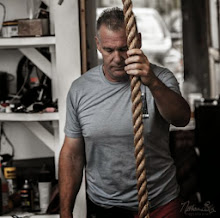One of the great things about Dr. Gracovetsky's talk is that it answered some questions and posed many more, at least for me. The information presented was at a fairly high level and not directly useable in a body therapy practice.
I want to write a little about what I'm doing with it. There will be more on the website www.animalsi.com, as I develop it.
The spine can be modeled as a semi rigid column--remember that the orientation and adaptation of the human spine is not identical to a quadruped's and a dog is differet than a horse--as such it is subject to certain rules of coupled motion. The motions that the spine can do, are: Side bend, flex/extend and axial rotation. If any two of these motions occurs, the third is introduced or coupled with them. In other words, if a horse is landing after a jump and turning towards the next one, its spine is in extension and side bending, therefore it will also axially rotate. You can see this in some of the dramatic pictures of Grand Prix jumpers.
One of the things that I got confused about in my evolution of movement was the idea that fish only had lateral side bending as their main movement, without the flex/extend and axial rotation. Dr. Gracovetsky cleared this up for me in his talk.
Look for more about this on the website www.animalsi.com in the free article and video section.
Tuesday, August 5, 2008
Subscribe to:
Post Comments (Atom)




No comments:
Post a Comment